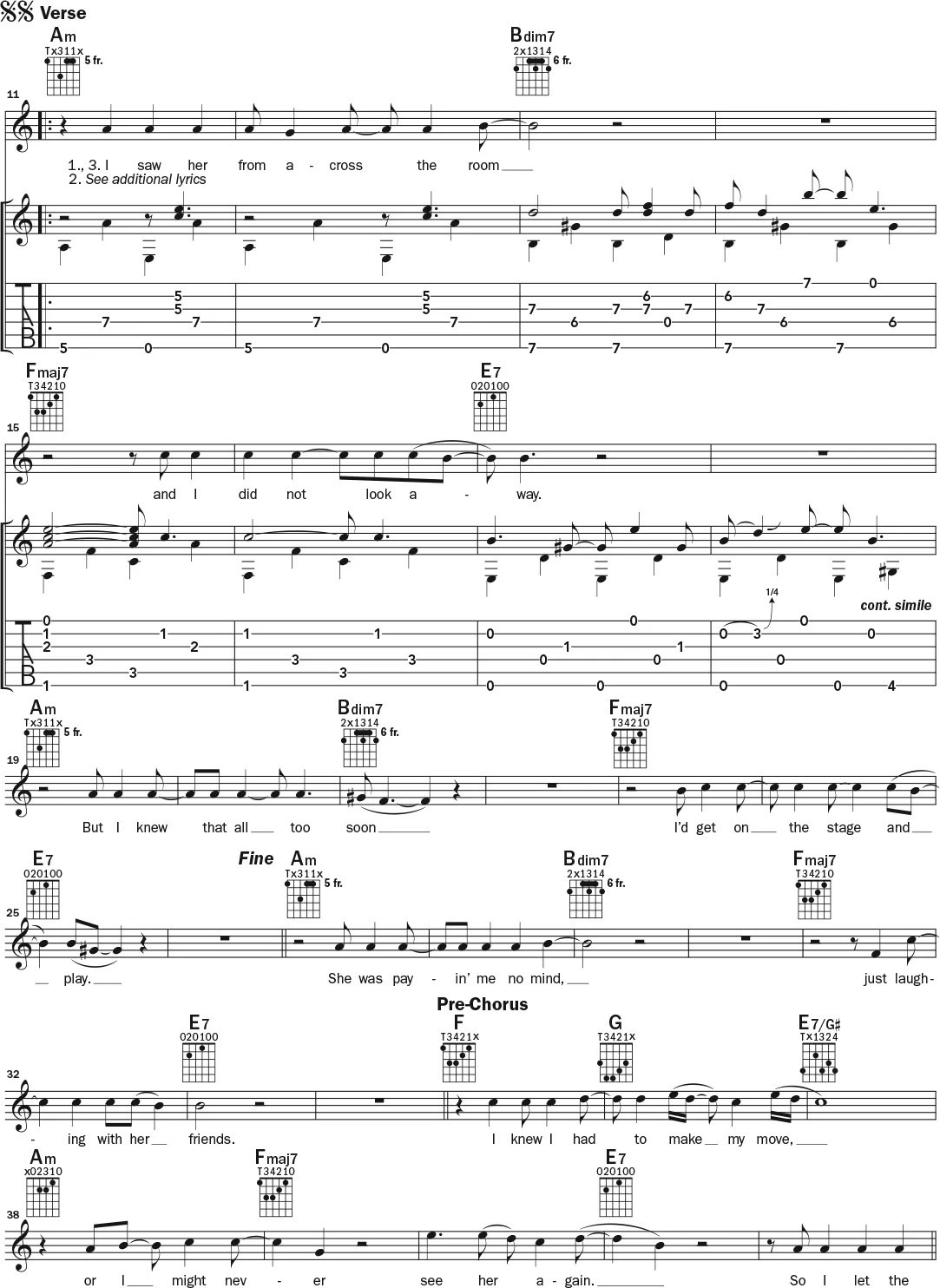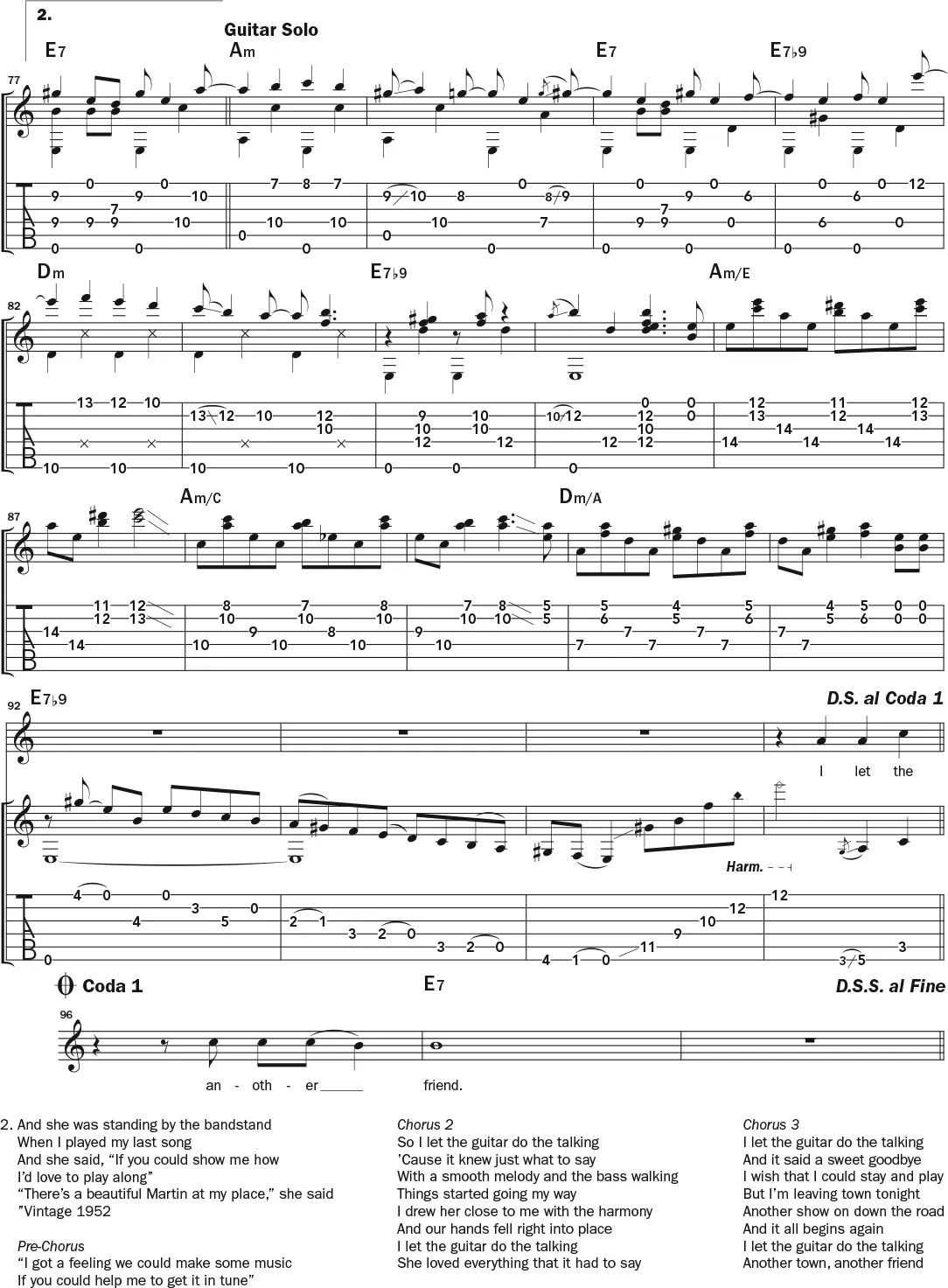Joe Robinson is a name synonymous with phenomenal guitar skills, particularly when it comes to the intricate art of Travis picking. His ability to combine blazing speed with soulful melodies, all while singing, sets him apart as a true innovator on the acoustic guitar. A prime example of his mastery is showcased in “Let the Guitar Do the Talkin’,” a track where his guitar playing truly takes center stage, captivating listeners with its rhythmic complexity and melodic charm. This piece delves into Robinson’s approach to this song, offering insights into the techniques that make his “Joe Robinson Guitar” style so distinctive.
Robinson’s performance of “Let the Guitar Do the Talkin’” is a masterclass in thumbpick and fingerstyle guitar. While the song can be approached with traditional fingerpicking, adopting Robinson’s thumbpick technique unlocks a new level of dexterity, especially crucial for navigating the song’s faster passages. This method provides the necessary agility for executing rapid single-note runs, such as those found in bars 7–10 and 92–95 of the song. Furthermore, the thumbpick adds a powerful punch to the bass notes, enhancing the rhythmic drive of the piece.
The foundation of “Let the Guitar Do the Talkin’,” and indeed much of Robinson’s guitar work, lies in Travis picking. This technique, named after the legendary country guitarist Merle Travis, has been popularized and expanded upon by guitar icons like Chet Atkins and Tommy Emmanuel. Travis picking involves a distinct pattern where the thumb typically handles the bass notes on the lower strings, while the index and middle fingers (and sometimes the ring finger) pluck the melody and harmony on the higher strings. This creates a rich, layered sound that is characteristic of the style. The core picking pattern that drives “Let the Guitar Do the Talkin'” is detailed in bars 11–18 of the transcription. To effectively execute this pattern, it’s essential to maintain the chord shapes throughout, allowing the thumbpick to strike the down-stemmed bass notes and the fingers to address the up-stemmed melody notes.
To further refine the Travis picking sound, palm muting the bass notes is a highly recommended technique, especially in the context of “joe robinson guitar” style. Palm muting adds definition and clarity to the bass lines, preventing them from becoming muddy or overpowering. This technique also creates a dynamic contrast with the brighter, unmated notes on the higher strings, giving the impression of multiple instruments playing simultaneously. In “Let the Guitar Do the Talkin’,” palm muting is instrumental in achieving the song’s signature percussive and articulate sound.
In conclusion, “Let the Guitar Do the Talkin'” is a brilliant example of Joe Robinson’s innovative approach to acoustic guitar and Travis picking. By employing a thumbpick, mastering the fundamental Travis picking pattern, and utilizing palm muting, guitarists can begin to unlock the secrets behind Robinson’s captivating sound. Studying pieces like this offers invaluable insights into the techniques that define the remarkable “joe robinson guitar” style and inspires players to explore the rich possibilities within acoustic guitar music.


